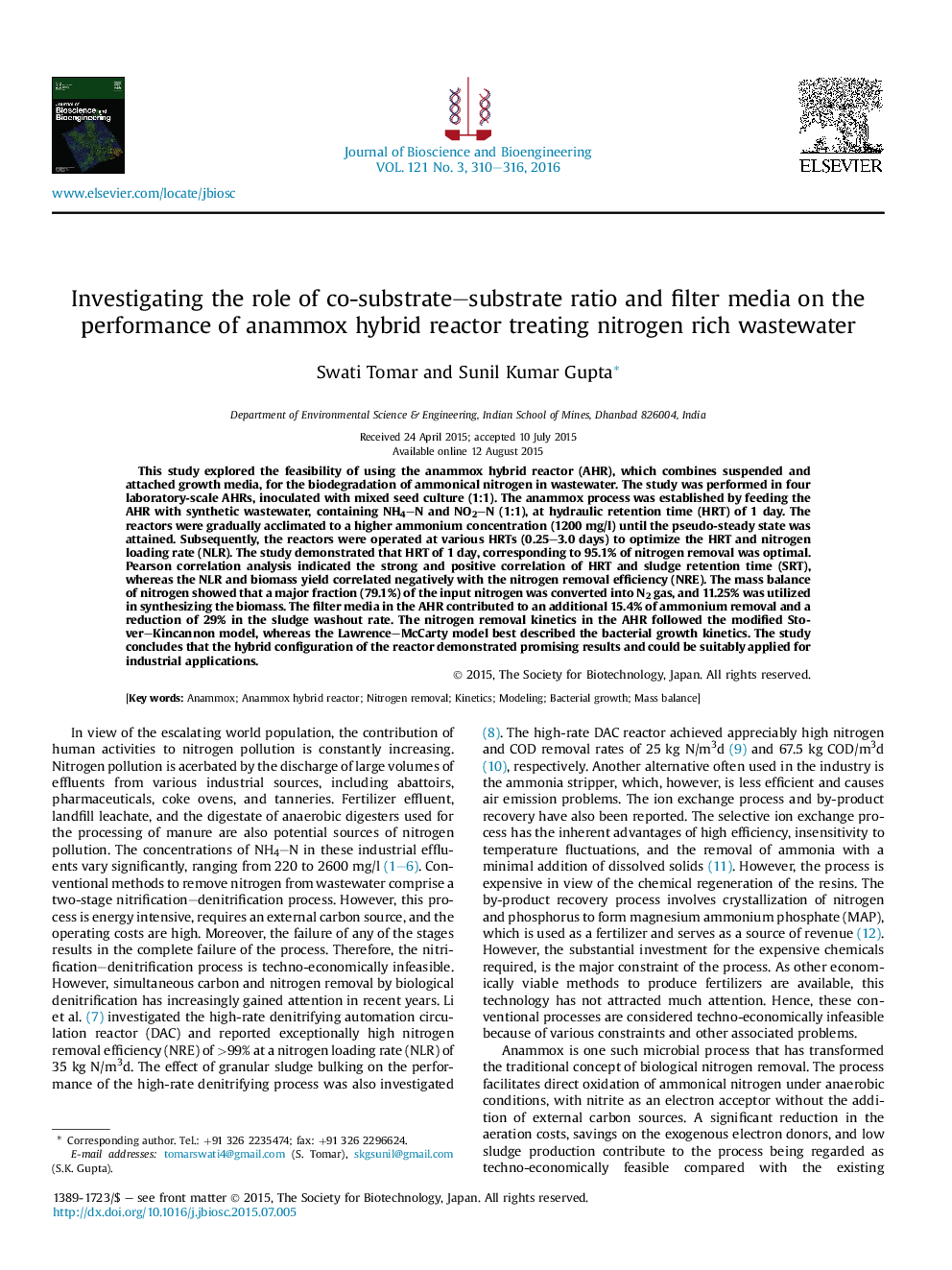| کد مقاله | کد نشریه | سال انتشار | مقاله انگلیسی | نسخه تمام متن |
|---|---|---|---|---|
| 20039 | 43154 | 2016 | 7 صفحه PDF | دانلود رایگان |

• Filter media (FM) contributed 15.4% additional NH4–N removal.
• FM also contributed 29% reduction in sludge washout rate.
• Mass balance revealed major fraction of input nitrogen got converted into N2 gas.
• Modified Stover–Kincannon model was most suitable for substrate removal kinetics.
• Lawrence and McCarty model suitably predicted bacterial growth kinetics.
This study explored the feasibility of using the anammox hybrid reactor (AHR), which combines suspended and attached growth media, for the biodegradation of ammonical nitrogen in wastewater. The study was performed in four laboratory-scale AHRs, inoculated with mixed seed culture (1:1). The anammox process was established by feeding the AHR with synthetic wastewater, containing NH4–N and NO2–N (1:1), at hydraulic retention time (HRT) of 1 day. The reactors were gradually acclimated to a higher ammonium concentration (1200 mg/l) until the pseudo-steady state was attained. Subsequently, the reactors were operated at various HRTs (0.25–3.0 days) to optimize the HRT and nitrogen loading rate (NLR). The study demonstrated that HRT of 1 day, corresponding to 95.1% of nitrogen removal was optimal. Pearson correlation analysis indicated the strong and positive correlation of HRT and sludge retention time (SRT), whereas the NLR and biomass yield correlated negatively with the nitrogen removal efficiency (NRE). The mass balance of nitrogen showed that a major fraction (79.1%) of the input nitrogen was converted into N2 gas, and 11.25% was utilized in synthesizing the biomass. The filter media in the AHR contributed to an additional 15.4% of ammonium removal and a reduction of 29% in the sludge washout rate. The nitrogen removal kinetics in the AHR followed the modified Stover–Kincannon model, whereas the Lawrence–McCarty model best described the bacterial growth kinetics. The study concludes that the hybrid configuration of the reactor demonstrated promising results and could be suitably applied for industrial applications.
Journal: Journal of Bioscience and Bioengineering - Volume 121, Issue 3, March 2016, Pages 310–316